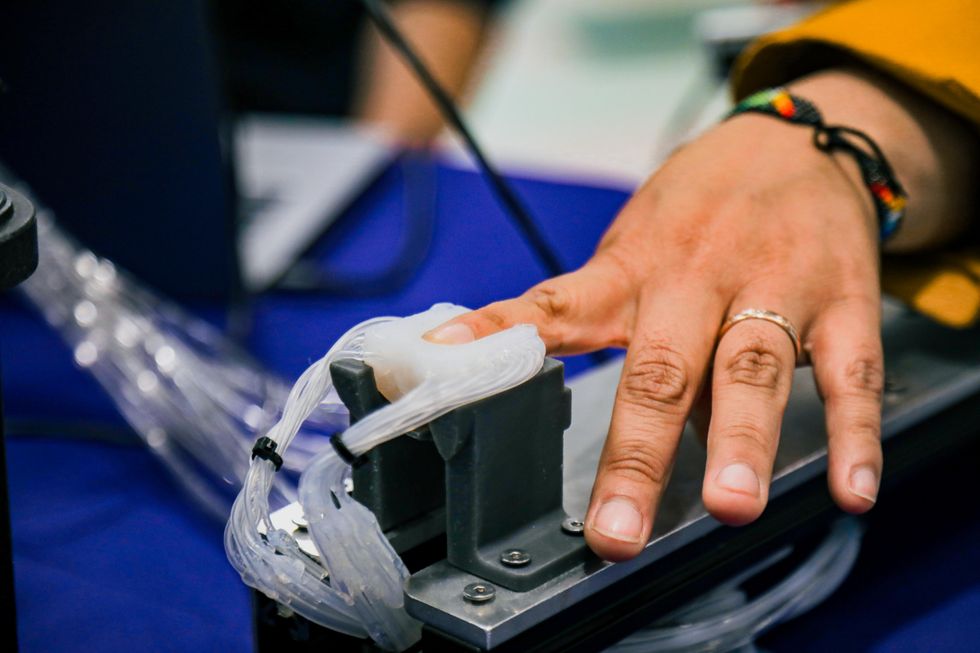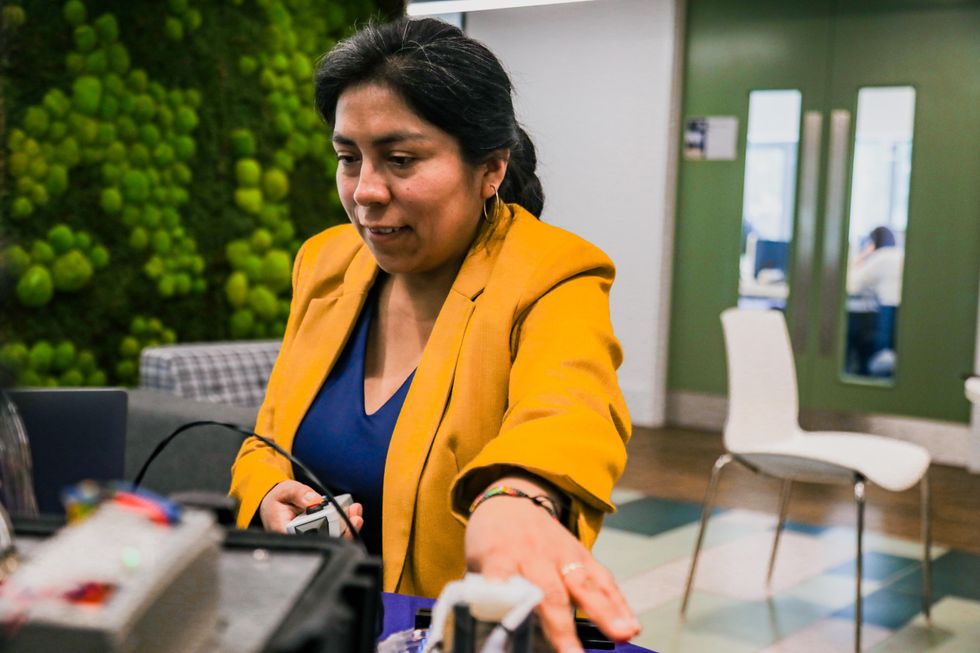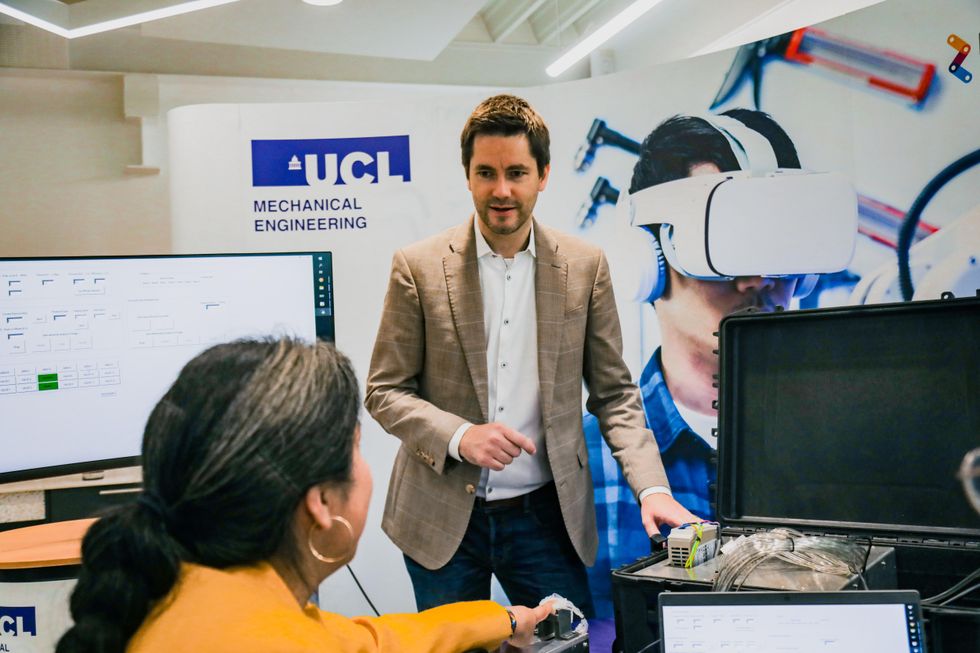
A soft fingertip device that can mimic human touch could one day allow people living thousands of miles away to hold hands, according to scientists.
Researchers at University College London (UCL) have developed new technology that they said “can simulate touch as natural as real-life sensations”.
The novel device, called the BAMH (innovative bioinspired haptic system), works by stimulating nerve cells that respond to touch using vibrations.
Scientists are currently using it to understand more how patients who have poor sensitivity in their fingertips lose their sense of touch over time.
They said it could be useful in healthcare settings, as a diagnostic tool for people who have metacarpal tunnel syndrome, which occurs when a wrist nerve is compressed, or diabetes, where loss of touch sensation is a symptom.

Dr Sara Abad, a roboticist at UCL’s Mechanical Engineering Department, said: “Skin is one of the biggest organs that we have in our bodies and provides several types of information, for instance, texture and edges (of the objects we touch).
“It also tells us about the type of stimulus we are receiving, (like) for example, a vibration.”
She said the device also offers a way “of incorporating touch into our virtual social interactions”.
Dr Abad said: “For instance, with the pandemic and globalisation, it’s very likely that you have family that is not living in the same town as you.
“Unfortunately, with video calls, there is a barrier.
“For social bonding, which is important, you need touch, but video calls don’t provide that.”
BAMH features a silicone fingertip that is connected to a machine about the size of a small suitcase.
It works by stimulating four key sensory nerve cells or touch receptors in the skin, giving the patient a “realistic sense of touch”, according to the team.
The researchers are looking to recruit at least 10 people experiencing loss of sensation for a clinical trial in the next few months to understand more about how the sense of touch degrades over time.
Professor Helge Wurdemann, chairman of robotics at UCL, said: “we want to understand (if) can we detect, over some time a degradation in (touch) sensitivity.

“And then we want to feed that data back to the clinician to then understand if they can, maybe adopt their therapy in order to slow down the loss in (touch) perception.”
The researchers said this technology also has the potential to be used in robot-assisted surgeries which could allow doctors to evaluate the type of tissue they are interacting with to determine if these are cancerous.
Outside of healthcare, they said more advanced versions of the device, which could include gloves that could provide “full sensation in your hands”, could help in decommissioning nuclear waste where large robots are often used to operate in hazardous areas.
Prof Wurdemann said: “If you need to disassemble radioactive materials, a realistic sense of touch could be crucial to sorting out the different components.”
The team presented its technology at the British Science Festival held at the University of East London.













